[bannerTop]
Welcome to our Search in tabs removal guide. The following instructions will aid you in removing the unwanted software from your PC.
Annoying browser hijacking programs such as Search in tabs can be found anywhere on the Web and removing them from your system, once they have been installed, could be quite a frustrating experience, especially if you do not know what steps you should take in order to correctly detect and delete such software. Typically, browser hijackers can initiate various potentially unwanted changes to your default browser, change its homepage or search engine, generate various intrusive ads, pop-ups, and banners on your screen or redirect your searches to some unfamiliar web sites. If you landed on this page, though, you don’t need to worry. Here we are going to show you exactly how to detect and uninstall Search in tabs from your Chrome, Firefox, Explorer or any other browser that has been affected. You only need to follow the instructions in the removal guide below and carefully familiarize yourself with its specifics.
What is the purpose of a browser hijacker like Search in tabs?
Most browser hijacking pieces of software are referred to by security experts as potentially unwanted. It is not because they are dangerous or have some virus-like abilities, but simply because, in most of the cases, they cause more annoyance than any actual benefit.
For instance, Search in tabs is a program, which is mainly created for the benefit of its developers, without actually offering the ordinary users something that is useful. Even though the program may claim to enhance your browsing experience if installed on your system, due to its activity, you may actually get exposed to various potentially unwanted advertising messages, sales offers, promotional links and other types of commercial content. This is a common online marketing practice, which aims to make you interact with more ads and generate traffic and clicks for certain interested parties such as vendors, website owners, and advertisers. By taking control over your browser (aka hijacking it), Search in tabs basically may manipulate your search results, redirect you to some sponsored sites and may cause serious interruptions in your normal browsing sessions without your approval. Through these changes, the people who control the invasive program can earn revenue every time you interact with the marketing content that gets displayed on your screen.
Can Search in tabs harm your system the way that a Trojan horse or Ransomware can?
Browser hijacking programs like Search in tabs are certainly not the most dangerous and harmful forms of software that can be encountered. In fact, they are not considered viruses and have nothing in common with threats like Trojans or Ransomware, simply because their main activity is to basically advertise, not to corrupt files, destroy your system or cause some malfunction. Still, one should be careful if they have an ad-generating piece like Search in tabs on their computer because such software can still cause certain issues if not removed. For instance, a browser hijacker may apply some modifications in your browser in favor of the products and services it wants to advertise and this way, your browser may become less secure and more vulnerable to potential virus attacks. This is valid also for your system because hackers with malicious intentions can easily exploit such ad-generating components by hacking them or inserting some fake ads and misleading links among the flow of real offers and ads that the hijacker usually generates. For these reasons, it is generally advisable for the users not to interact with the randomly displayed content, or simply uninstall entirely the hijacking application.
How to avoid browser hijackers in the future
If you don’t enjoy being flooded with ads, pop-ups, and different redirects every time you open your default browser, then it is best to keep potentially unwanted programs such as browser hijackers away from your machine rather than facing the need to remove them. However, if you have already ended up with Search in tabs on your PC, then the removal guide below can help you deal with it in a few manual steps. There is also a professional automatic removal tool at your disposal, so in case you face any difficulty, feel free to use the scanner and help yourself get rid of the irritating software. Once you successfully eliminate the browser hijacker, don’t forget about prevention. Since such software is considered legal, it can be found bundled in every normal installer, free download link, automatic installation manager, torrent, email attachment or similar legitimate software transmitter. If you don’t want to make it part of your system, though, all you need to do is to simply customize the installer by using the Advanced/Manual/Custom option and disable the potentially unwanted software from there.
Search in tabs 0.9.0 Removal
I – Safe mode and revealing hidden files
II – Uninstallation
[bannerMiddle]
- Use the Winkey+R keyboard combination, write Control Panel in the search field and hit enter.

- Go to Uninstall a program under Programs.

- Seek the unwanted software, select it and then click on Uninstall
If you are unable to spot Search in tabs, search for any unrecognized programs that you do not remember installing on your PC – the unwanted software might disguise itself by going under a different name.
III – Cleaning all your browsers
- Go to your browser’s icon, right-click on it and select Properties.

- Go to the Shortcut tab and in the Target make sure to delete anything written after “.exe”.

- Now, open your browser and follow the instructions below depending on whether you are using Chrome, Mozilla or IE.
- Chrome users:
- Go to your browser’s main menu located in the top-right corner of the screen and select Settings.
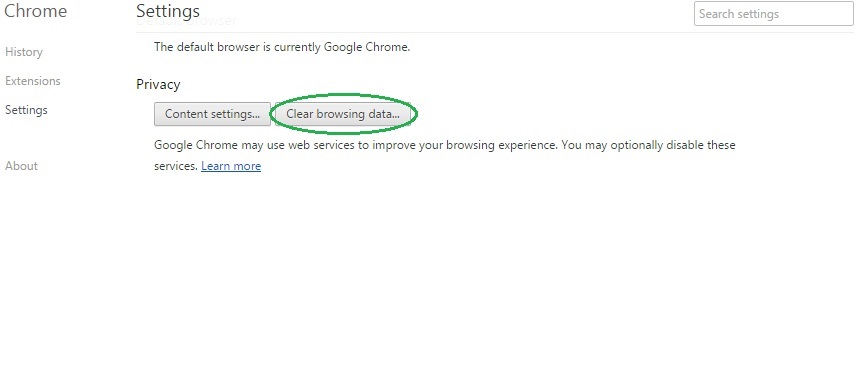
- Scroll down, click on Show Advanced Settings and then select Clear browsing data. Just to be sure, tick everything and clear the data.
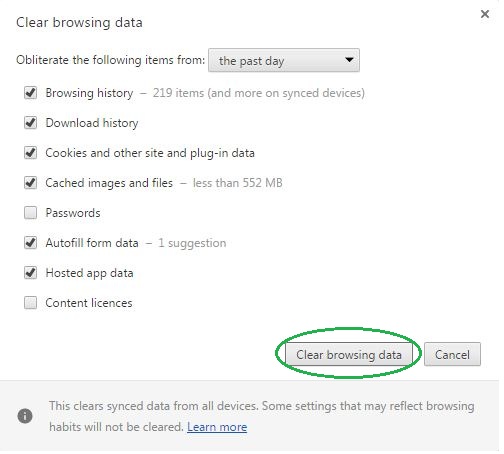
- Now, in the left pane, go to Extensions and look through all extensions that are integrated within your browser. If you notice any suspicious add-on, disable it and then remove it.
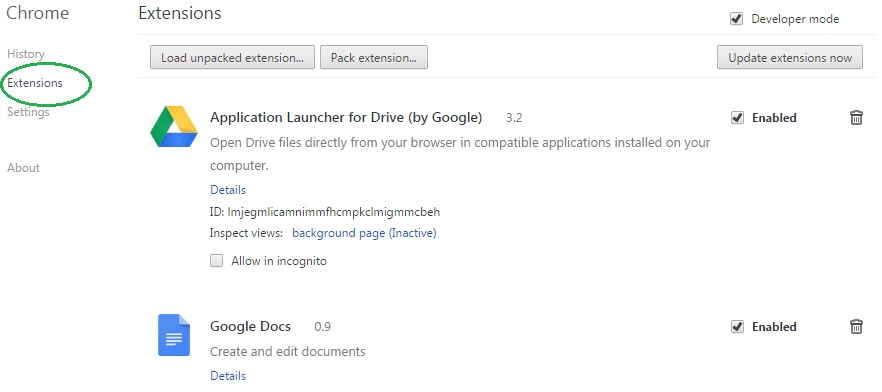
- Firefox users:
- Similarly to Chrome, go to the main menu and select Add-ons and then Extensions.
- Remove any suspicious browser extensions that you may have even if they do not have the name Search in tabs on them.
- IE users:
- Go to Tools and select Manage add-ons.

- Click on all add-on types from the left pane and check if there is anything suspicious in the right panel. In case you find anything shade, make sure to remove it.
IV – Removing Shady processes
[bannerMiddleSecond]
- Go to your start menu, type Task Manager in the search field and from the results open View running processes with Task Manager.

- Thoroughly look through all processes. The name Search in tabs might not be there, but if you notice any shady looking process that consumes high amounts of memory it might be ran by the unwanted program.
- If you spot the process ran by Search in tabs, right-click on it, open its file location and delete everything in there. Then go back to the Task Manager and end the process.

V – DNS check
- In the start menu search box write View Network Connections and open the first result.
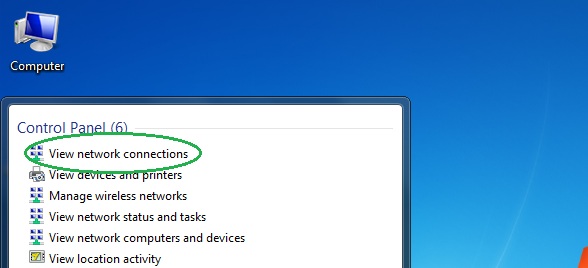
- Right-click on the network connection you are using and go to Properties.

- Select Internet Protocol Version (TCP/IPv4) and click on Properties.

- If Obtain DNS server addresses automatically is not checked, check it.
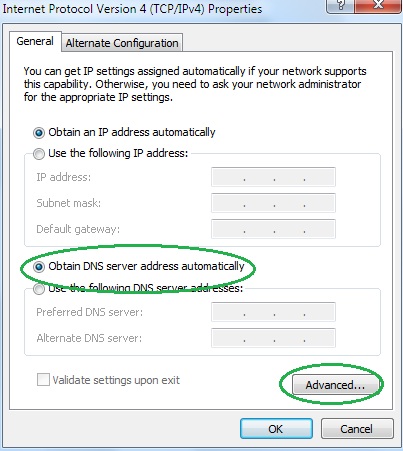
- Go to Advanced and select the DNS If there is anything in the DNS server addresses field, remove it and click OK.

- Click OK on the rest of the opened windows.









